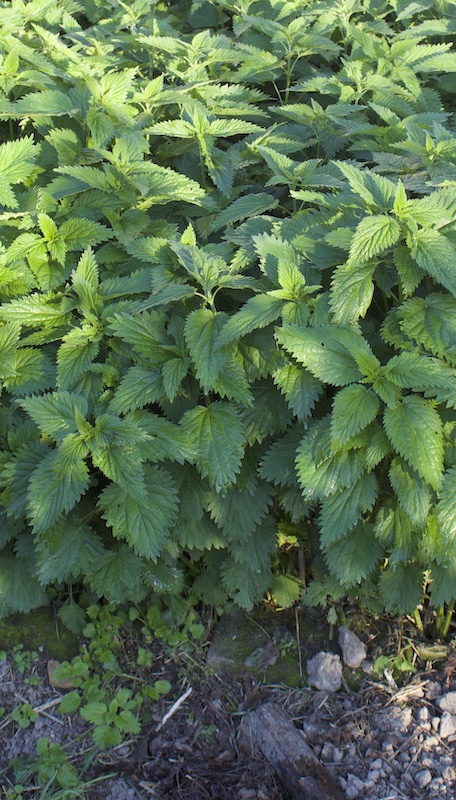
Urtica dioica, often called common nettle or stinging nettle, is a herbaceous perennial flowering plant in the family Urticaceae. It is widespread throughout Europe, Asia, northern Africa, and North America. It grows in many habitats, especially on nitrogen-rich soils. The plant has a long, creeping rhizome and stolons and can form dense colonies. It has large, bristly, deeply veined leaves that have a strongly serrated margin. The lower leaves are opposite, while the upper leaves are alternate. The small flowers are greenish-white and borne in dense axillary inflorescences. The fruit is a small nutlet that is partially enclosed by the concave base of the flower that falls away at maturity. The plant is very variable in appearance, especially with regard to hairiness. The leaves and stems are covered with stinging hairs that contain a mixture of histamine, acetylcholine, 5-HT, and other chemicals that cause a painful sting when they come in contact with skin. The plant is used as a source of fibre, as a herbal medicine, and as a source of green manure. It is also a food plant for several species of butterfly.
The map shows known occurrence points of Urtica dioica recorded in scientific biodiversity databases.
Source: GBIF.org — Global Biodiversity Information Facility
Loading scientific articles about Urtica dioica...